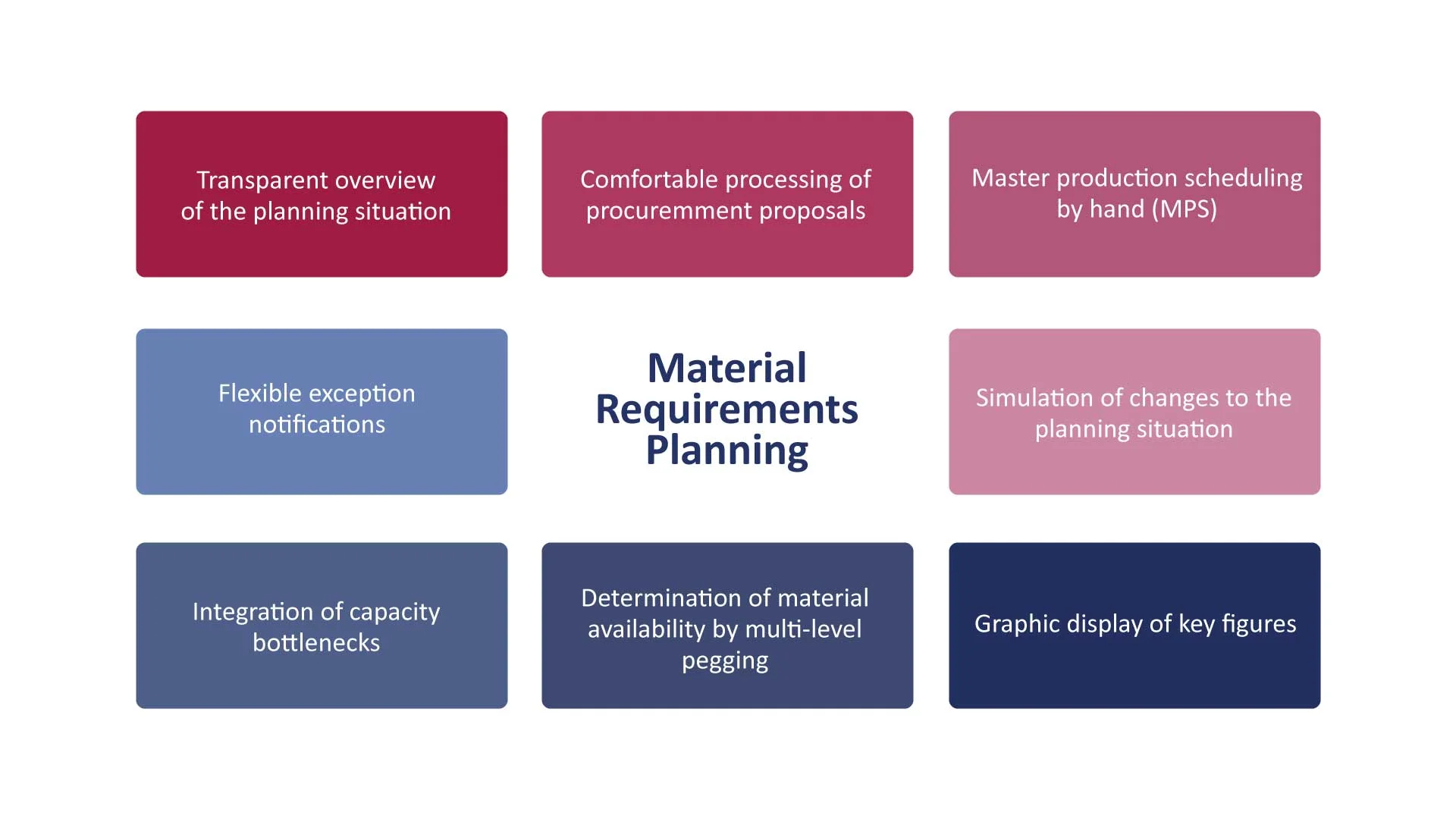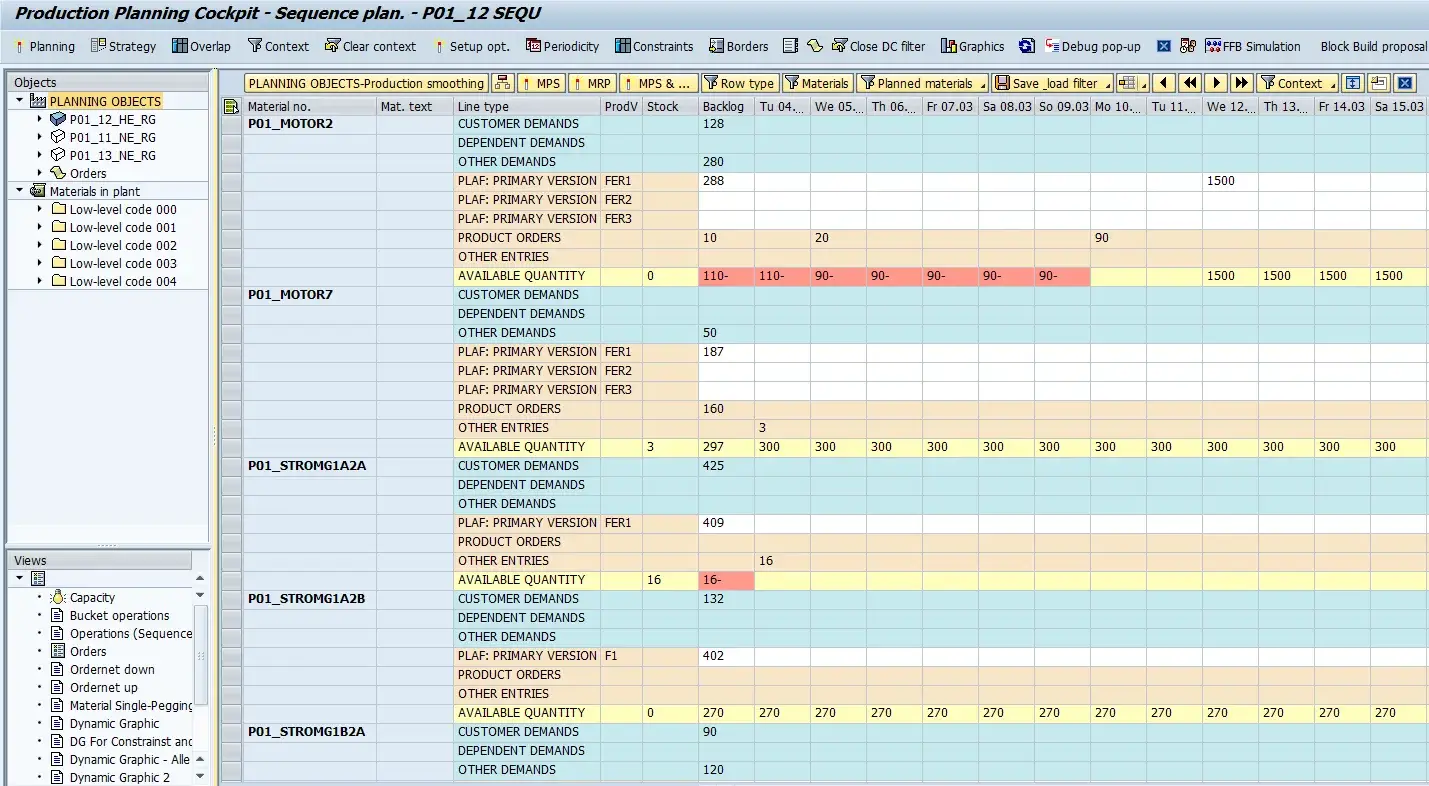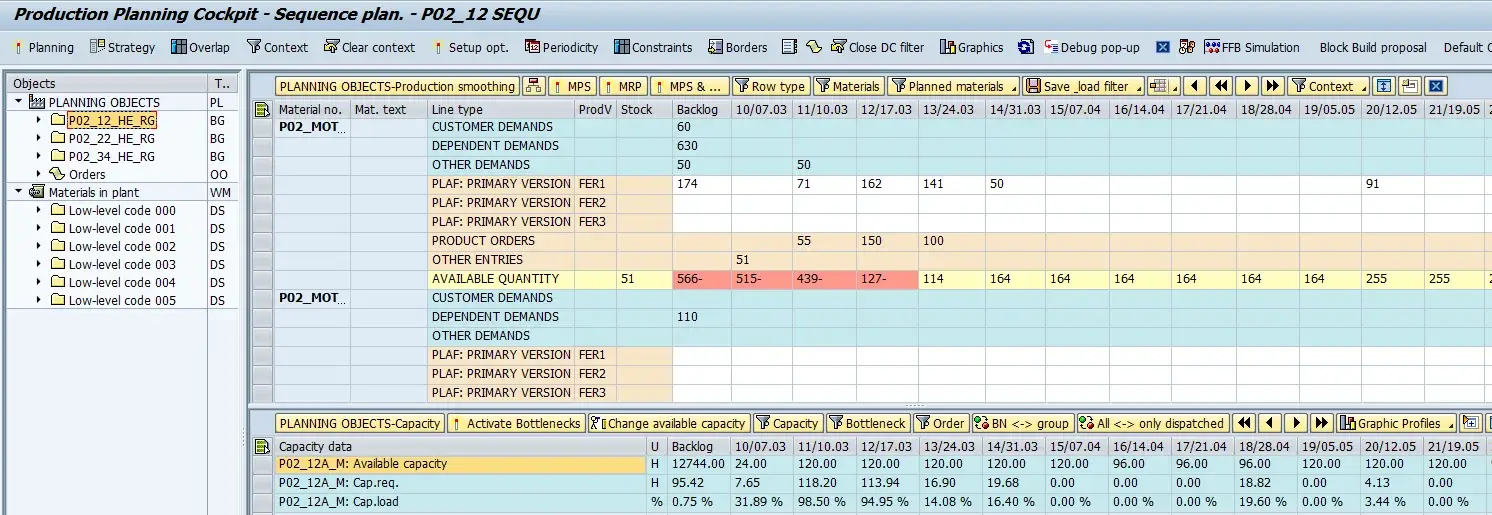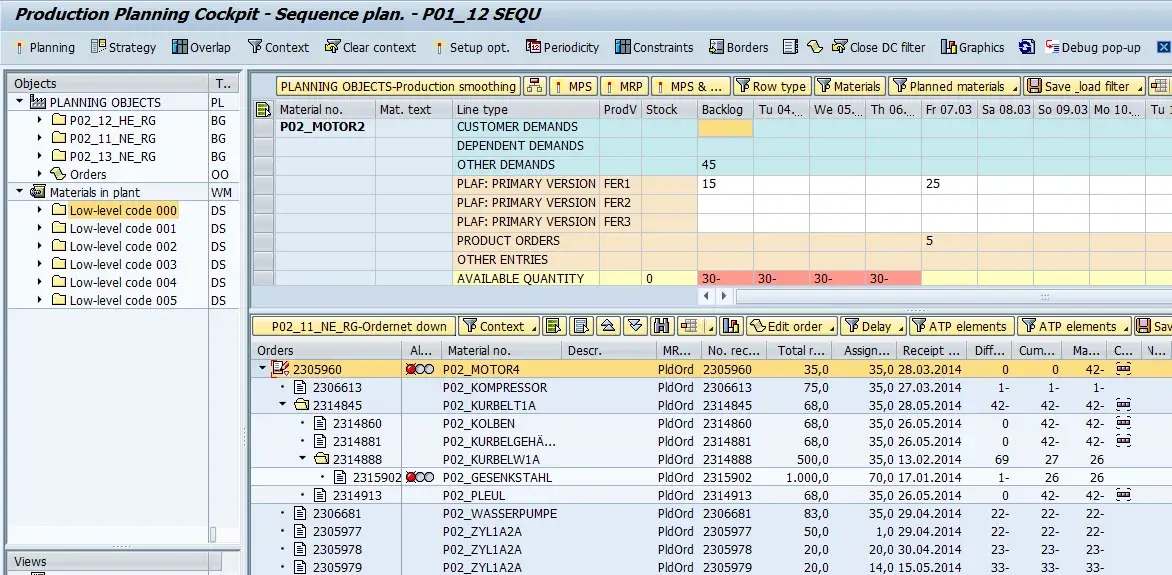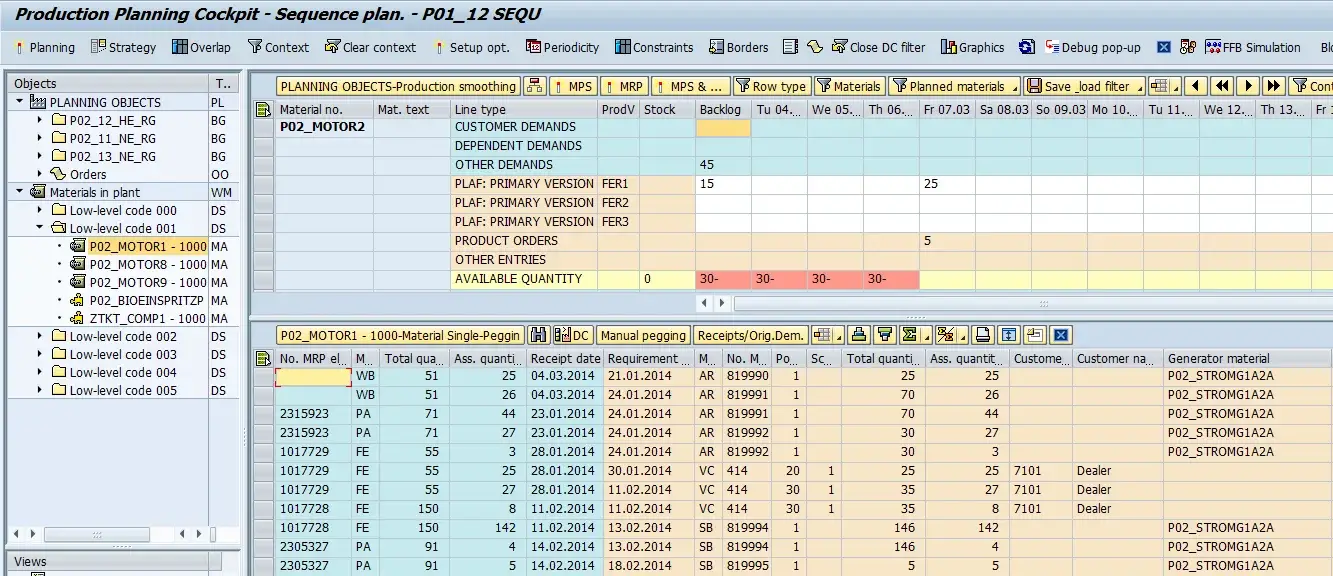PPC Master Planner
The PPC Master Planner schedules receipts (in-house production and external procurement) on time for demand: The MRP-controller is assisted in his or her task to provide all finished products, semi-finished products as well as raw materials on time and in the required quantity to the correct storage location or plant. Thus, all needed parts are available on time for production or delivery.
